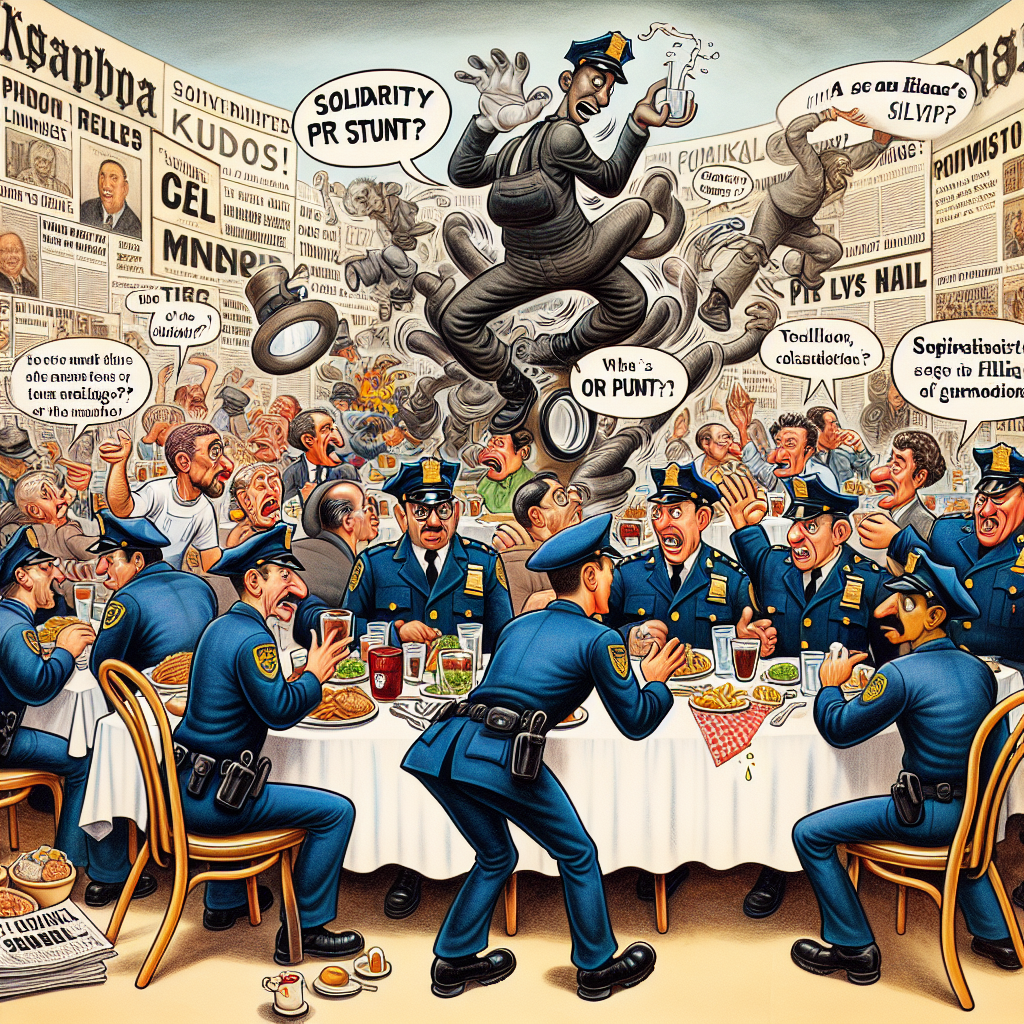Kapil Sharma Shares Pics as Canada Police Officers Dine at His Cafe, Days After Firing Incident

OH. MY. GOODNESS. CAN YOU BELIEVE THIS? In a world where every little thing becomes a DRAMATIC headline, here we are again—Kapil Sharma, the beloved comedian turned restaurateur, has posted pictures of Canadian police officers dining at his café mere days after a “firing incident.” Let me just say this loud and clear: THE AUDACITY of turning a BASELINE BUSINESS OPERATION into some grand solidarity spectacle is just TOO MUCH for me to handle.
Now, let’s get this straight. The incident involved an employee termination, commonly known in every workplace as a “firing.” Yet, somehow, this event has been spun into a narrative where police officers – yes, the very embodiment of law and order – are now dining at the café and are openly celebrated for their morally supportive presence. Kapil Sharma took to social media, expressing his gratitude and emphasizing how important it was to him that the police showed solidarity against what he framed as “violence.” But wait... let's pause here and ask ourselves—what kind of “violence” are we really talking about? Because firing someone isn’t violence. It’s business. Harsh, sometimes cold, but part of the reality of running any enterprise.
The entire situation reeks of the modern-day tendency to OVERDRAMATIZE mundane human resources decisions while using the gravitas of police presence as a PR coup. Honestly, it feels like a marketing ploy wrapped in thinly veiled gratitude. The officers sitting and having a meal? Great. But who decided that is now newsworthy? Last I checked, dining out is what police officers do on their breaks like regular citizens. To spotlight this as a show of “strength” or “support” feels like an overreach of logic and an undercutting of genuine community-building efforts.
What’s especially galling here is the rapidity and willingness of the public narrative to turn what could have been a simple, straightforward matter into a spectacle of high emotion and symbolic gestures. We have social media – the ever-hungry beast – amplifying every single detail until none of it even resembles the original event anymore. And the problem isn’t just the media; it’s us, the audience, who lap it up like it’s the last piece of pie at a family dinner.
We also can't ignore the underlying message this phenomenon sends about the role of police in society. Dining at a business that recently fired an employee suddenly becomes a proclamation against “violence,” whatever that might mean in this context. Are police officers supposed to be cheerleaders for employers exercising managerial decisions? Or are they protectors of public safety? When the lines get this blurry, confusion and misinformation thrive. And frankly, isn’t it a little unsettling that such interactions are publicly showcased as symbolic gestures rather than everyday public service? This reinforces the unhealthy narrative of weaponizing social presence rather than focusing on actual law enforcement priorities.
Let’s talk about accountability, too. The employee who was fired? Their story has been reduced to a footnote in a larger saga of social media photo-ops. This incident speaks volumes about how corporate and celebrity PR strategies often WIN over human empathy and workplace fairness. The real issue—whether the firing was justified or handled with dignity—is brushed aside in favor of a feel-good social media moment. This prioritization of image over substance is exactly why so many people are skeptical when fame and justice intersect.
And oh, the outrage that follows every single time! The Internet is flooded with comments: some defending the police, others condemning the firing, all mixed with a constant buzz of performative wokeness and unilateral indignation. As a longtime Internet watchdog and serial complainer (because SOMEONE has to keep the internet’s madness in check), I can tell you—it’s exhausting how quickly these stories get twisted and then weaponized by people who weren’t even there.
What worries me most is what this episode says about our cultural priorities. Instead of looking beneath the surface to understand the complexities of workplace dynamics, firing protocols, or community relations with law enforcement, we get distracted by staged photos and hashtags. The conversation is shifted away from systemic improvements, fair labor practices, and meaningful police-community engagement, and instead focuses on who sat where and shared what meal. Isn't that just a bit... trivial, for a moment that should, at best, inspire thoughtful dialogue?
In a healthier media ecosystem, we wouldn’t get caught up in the “look at this! The heroes are eating with the corporation after a termination!” narrative. Instead, we’d have a conversation about how businesses can operate humanely, how layoffs and firings can be managed compassionately, how police-community relations can be constructive and aimed at safety, not symbolism. Perhaps the absence of these deeper discussions is why the spectacle becomes so seductive to the public.
So, yes. Kapil Sharma sharing pictures of police officers dining at his café after a firing incident is an interesting footnote of celebrity PR in the social media age. But maybe, just maybe, let’s take a step back from amplifying these staged moments and start demanding more thoughtful, nuanced conversations. We need less theatrics and more accountability, less spectacle and more substance.
Because if social media has taught us anything, it’s that outrage and spectacle are easy—understanding and patient discourse, however, are hard. And the world desperately needs the latter.

